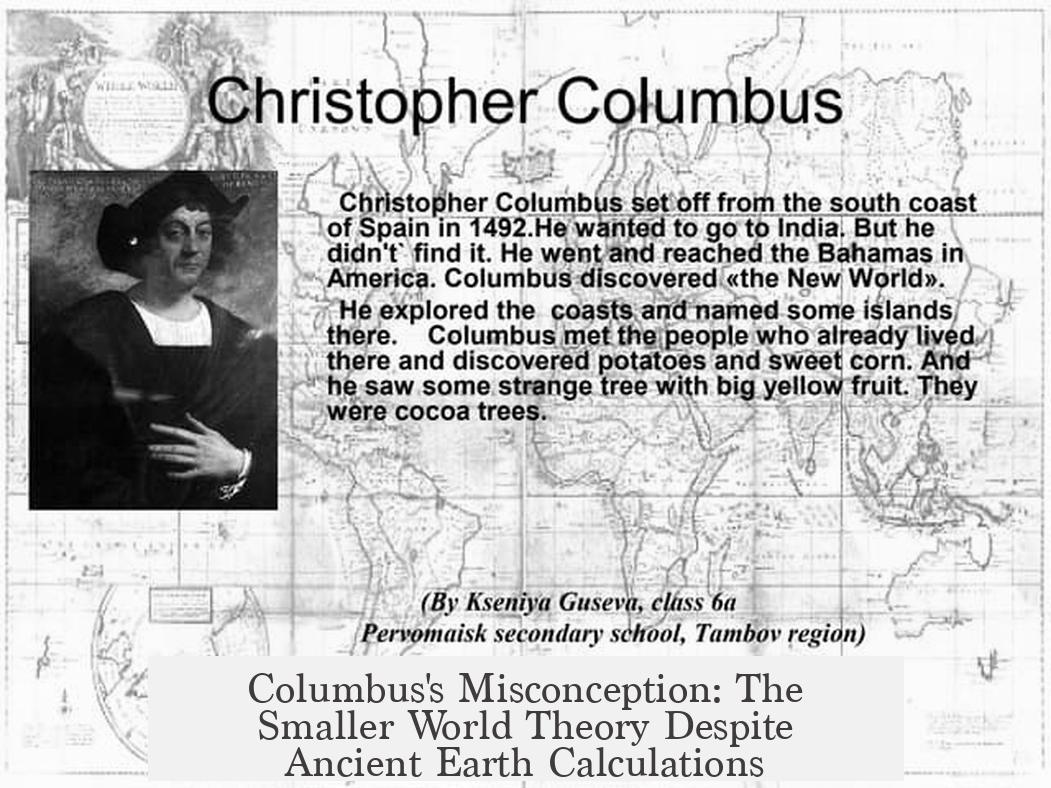Christopher Columbus underestimated the Earth’s size because he relied on inaccurate estimates of the planet’s circumference that were smaller than those calculated by ancient scholars. Despite ancient calculations of the Earth’s radius, Columbus accepted figures from sources that significantly underestimated the distance across the globe, leading him to believe Asia was closer by sailing west than it actually was.
In Columbus’ time, the spherical shape of the Earth was widely accepted among educated Europeans. By the late 15th century, the idea that Earth was flat was nearly extinct in scholarly circles. Greek thinkers such as Pythagoras and Aristotle had already established the Earth’s roundness by observing natural phenomena. Eratosthenes, a Greek mathematician from the 3rd century B.C., provided a fairly accurate measurement of the Earth’s circumference, roughly 40,000 kilometers (24,860 miles). This knowledge persisted, passed down carefully through centuries of scholarship.
Despite this, the actual distance Columbus used for the Earth’s circumference was far smaller. Columbus mainly drew on the work of earlier geographers whose measurements were erroneous. One influential source was the 2nd-century geographer Claudius Ptolemy, whose manuscripts misrepresented the length of a degree of longitude, making the entire circumference seem smaller. Additionally, Columbus accepted the estimates of Paolo Toscanelli and other contemporary cartographers who believed Asia extended much further eastward than it does in reality.
This led Columbus to believe that the westward route to Asia was only about 2,400 nautical miles, much shorter than the real distance of roughly 15,000 nautical miles including crossing the Americas. It meant Columbus thought he could reach the East Indies by sailing west without a long journey around Africa.
| Factor | Impact on Columbus’s Estimation |
|---|---|
| Ancient Measurements (Accurate Circumference) | Approximately 40,000 km (24,860 miles), well documented but not uniformly accepted |
| Ptolemy’s Influence | Underestimated circumference by about 25%, making Earth appear smaller |
| Overestimation of Asia’s width | Extended Asia further east, shortening approximate distance westward |
| Columbus’s own belief and sources | Accepted smaller circumference and larger Asia, leading to underestimation |
Funding challenges reflected the skepticism of rulers such as those in Portugal, England, and France. These countries considered Columbus’s estimates foolish because they believed the Earth was much larger than he claimed. They assumed the proposed westward journey was too long and dangerous. However, after prolonged negotiation, Ferdinand and Isabella of Spain agreed to finance Columbus’ voyage, based largely on his optimistic calculations.
Another common misconception is that Columbus sought to prove the Earth was round. This myth, widely believed today, is false. Educated Europeans at the time already understood that the Earth was a sphere. The story that Columbus faced opposition from a flat-Earth believing Church or that his contemporaries feared he’d fall off the globe originated much later, particularly after Washington Irving’s 1828 biography of Columbus. Irving’s popular but historically flawed book exaggerated the opposition Columbus faced and created the flat-Earth myth for dramatic effect.
Columbus was not mocked or ridiculed for believing in a round Earth. Scholarly resistance focused mainly on his geographic calculations, specifically the size of the Earth and the feasibility of the westward route to Asia. This is where real disagreement lay. His contemporaries were concerned with the actual distances involved, which Columbus misunderstood. Without knowledge of the American continents, the Atlantic and Pacific oceans were assumed to be one vast sea. That made Columbus’s westward path seem direct and plausible.
The discovery of the Americas was itself a surprise. Columbus did not anticipate islands and continents separating the known oceans, which drastically increased the distance of any journey westward. The presence of landmasses made the actual journey about six times longer than Columbus estimated. It was this underestimation of distance, rather than ignorance about Earth’s shape, that led him to think the world was smaller.
In short, Columbus’s error arose from accepting faulty geographic data and overestimating Asia’s eastward extension. These misconceptions combined to produce a smaller perceived globe, justifying his plan to reach Asia by sailing west. The reality was that he unknowingly encountered a new continent, changing history forever.
- Columbus believed in a spherical Earth but seriously underestimated its circumference.
- He relied on outdated and inaccurate geographic sources that shrank Earth’s size.
- His contemporaries understood Earth was larger, causing funding skepticism.
- The myth of Columbus proving Earth’s roundness originated over 300 years after his voyage.
- The existence of the Americas made Columbus’s assumed distances grossly incorrect.
Why did Columbus believe the Earth was smaller than it actually is?
Columbus used estimates that greatly underestimated Earth’s circumference. He relied on some older and less accurate calculations which made the world seem smaller.
Were scholars in Columbus’s time aware the Earth was round?
Yes. Educated people in the 15th century accepted that Earth was spherical, based on ancient Greek science.
Why did Columbus’s sponsors doubt his voyage plans?
Portugal and other kingdoms thought his distance estimates were too low. They believed the Earth was much larger, making his westward route unrealistic.
Did Columbus set out to prove the Earth was round?
No. By then, most scholars already accepted Earth’s round shape. Columbus aimed to find a shorter sea route to Asia.
Where did the myth that Columbus thought the Earth was flat come from?
The story started with Washington Irving in 1828. His book exaggerated events and created the false belief that Columbus fought against flat-Earth skeptics.




